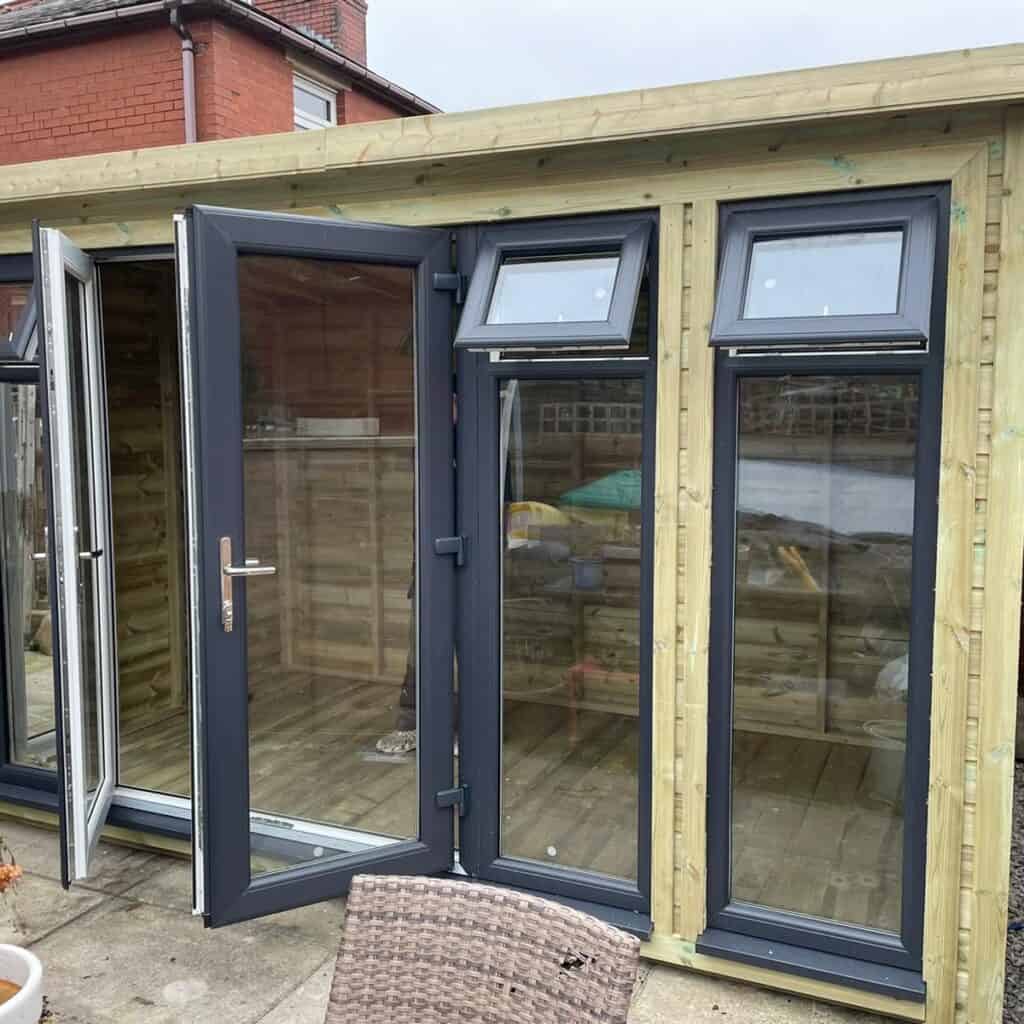Transforming your outdoor building into a private fitness zone is one of the smartest and most rewarding ways to use a shed or summerhouse. With rising gym memberships, busy lives, and a growing demand for flexible workouts, many homeowners are now building a garden gym in a shed or summerhouse — and the results are impressive.
This isn’t just about convenience. A well-designed home gym can boost motivation, save you time, and increase the value of your property. Whether you’re a beginner, a casual weekend lifter, or a full-on fitness fanatic, creating a dedicated workout space in your garden is more achievable than ever.
Here’s everything you need to know to design your dream garden gym — from layout and flooring to temperature control and equipment choices.
Start with the Right Building: Shed vs Summerhouse
Before you roll out a yoga mat or plug in a treadmill, it’s essential to decide what type of structure suits your needs. While both sheds and summerhouses can work brilliantly, the decision often depends on the scale of your gym and your all-year-round intentions.
If you’re after a minimalist weights corner or simple workout zone, a robust shed might be all you need. Choose a heavy-duty timber shed with extra height and reinforced flooring so you can safely support gym equipment without damaging the structure.
On the other hand, a summerhouse brings added comfort, more glazing for natural light, and often a more premium look and feel. This makes it ideal for wellness zones, yoga studios, or multi-purpose spaces that mix leisure with fitness. Many homeowners opt for a bespoke summerhouse layout tailored to fit exercise needs and storage alike.
Plan Your Layout Carefully
The most effective garden gyms start with smart planning. First, measure your space and think about the types of workouts you want to do. Are you lifting free weights? Doing HIIT training? Using a cross-trainer or rowing machine?
Once you know your priorities, sketch a rough layout to ensure there’s enough clearance around the equipment. You’ll also want space for stretching, storage for smaller gear, and if possible, a mirror wall to check form and posture.
Multi-functionality is key in smaller garden buildings. Wall-mounted racks, folding benches, and modular storage units allow you to maximise limited space while keeping everything tidy. For cardio-heavy routines, allow airflow and space around machines to avoid overheating or awkward movements.
Choose the Right Flooring
Gym flooring plays a crucial role in the usability and comfort of your space. It needs to protect your subfloor, absorb shock, reduce noise, and provide grip.
Rubber matting or interlocking gym tiles are the top choices. They’re durable, easy to install, and provide a stable base for weights and machinery. Foam mats can also be used for lighter workouts or yoga, but they tend to wear down quicker under heavier use.
If you’re creating a luxury wellness room in a summerhouse, consider a hybrid approach, hard flooring like laminate or vinyl near the entrance, and soft rubber or foam in your workout zone.
Lighting, Ventilation and Temperature Control
A comfortable gym is a productive gym. While your home may have central heating and cooling, your garden building likely doesn’t — so careful planning is essential.
Ventilation is the first priority. Install windows that open or add air vents to maintain airflow, prevent moisture build-up, and keep temperatures stable. If your workouts tend to get intense, consider a ceiling fan or portable extractor fan.
Heating options include electric panel heaters or underfloor heating for a more premium feel. In summer, portable air conditioners or fans will keep things cool.
Lighting matters more than you might think. Natural light is fantastic for motivation and atmosphere, so opt for a summerhouse with large windows or glazed doors. If your space is darker, install LED strip lights or overhead lighting with a daylight colour temperature to avoid the clinical feel of cold-white bulbs.
Equipment Essentials for Every Setup
You don’t need a full commercial gym to get results. A few high-quality basics can be enough, especially in a smaller space. Here’s a list of common gear that works well in most garden gyms:
- Dumbbells or adjustable weight sets
- Kettlebells
- Foldable bench
- Resistance bands
- Pull-up bar
- Spin bike or rowing machine
- Yoga mat and foam roller
- Mirror for checking form
- Wall-mounted storage for weights and accessories
For those with more space and budget, you could add a squat rack, power cage, or even a compact treadmill.
Don’t forget sound systems — a small Bluetooth speaker or smart home assistant can add serious energy to your workouts.
Keep It Tidy and Motivational
A cluttered gym is an uninspiring gym. Use hooks, shelves, and bins to keep gear organised and off the floor. For motivational flair, decorate the walls with framed fitness quotes, chalkboards for tracking progress, or a whiteboard calendar with your training plan.
Adding your own personal touches — whether it’s a small drinks fridge, gym towels, or houseplants — can turn a functional space into something you’ll genuinely love using.
Final Thoughts: Train When You Want, Just Steps from Home
Installing a garden gym in a shed or summerhouse is a game-changer for your health, routine, and home value. It offers total privacy, flexibility, and convenience. No travel time. No waiting for machines. Just a dedicated space that’s ready when you are.
Whether you’re building a simple weights room or a full fitness retreat, Midlands Sheds and Summerhouses can help you get there with high-quality, customisable buildings designed to meet your fitness needs.
Looking for inspiration on how to start your project? Take a look at our guides on shed types, bespoke garden building options, and cosy garden office design tips — all packed with ideas to help you build a space that works.




